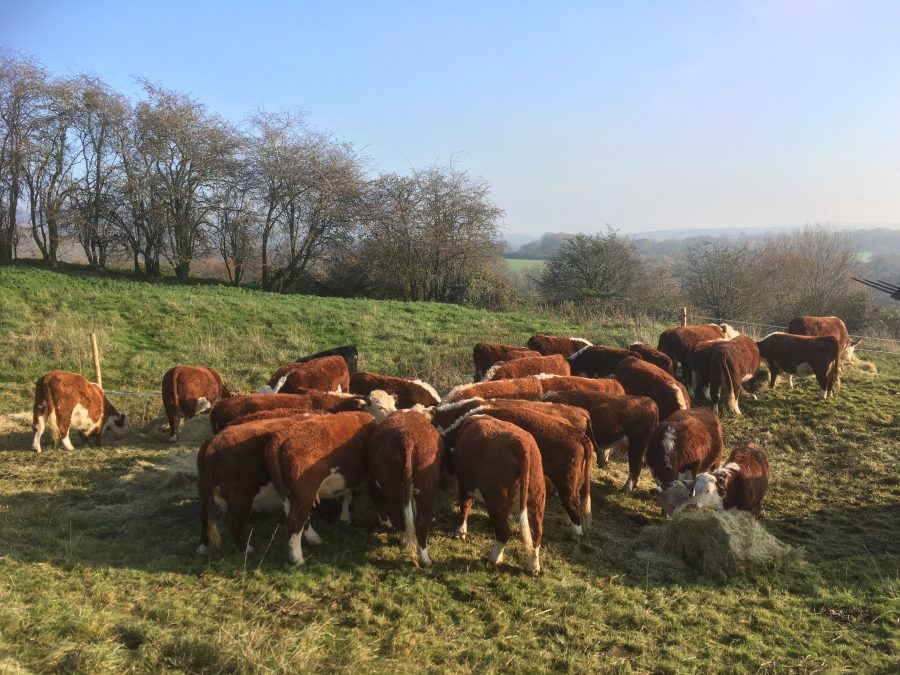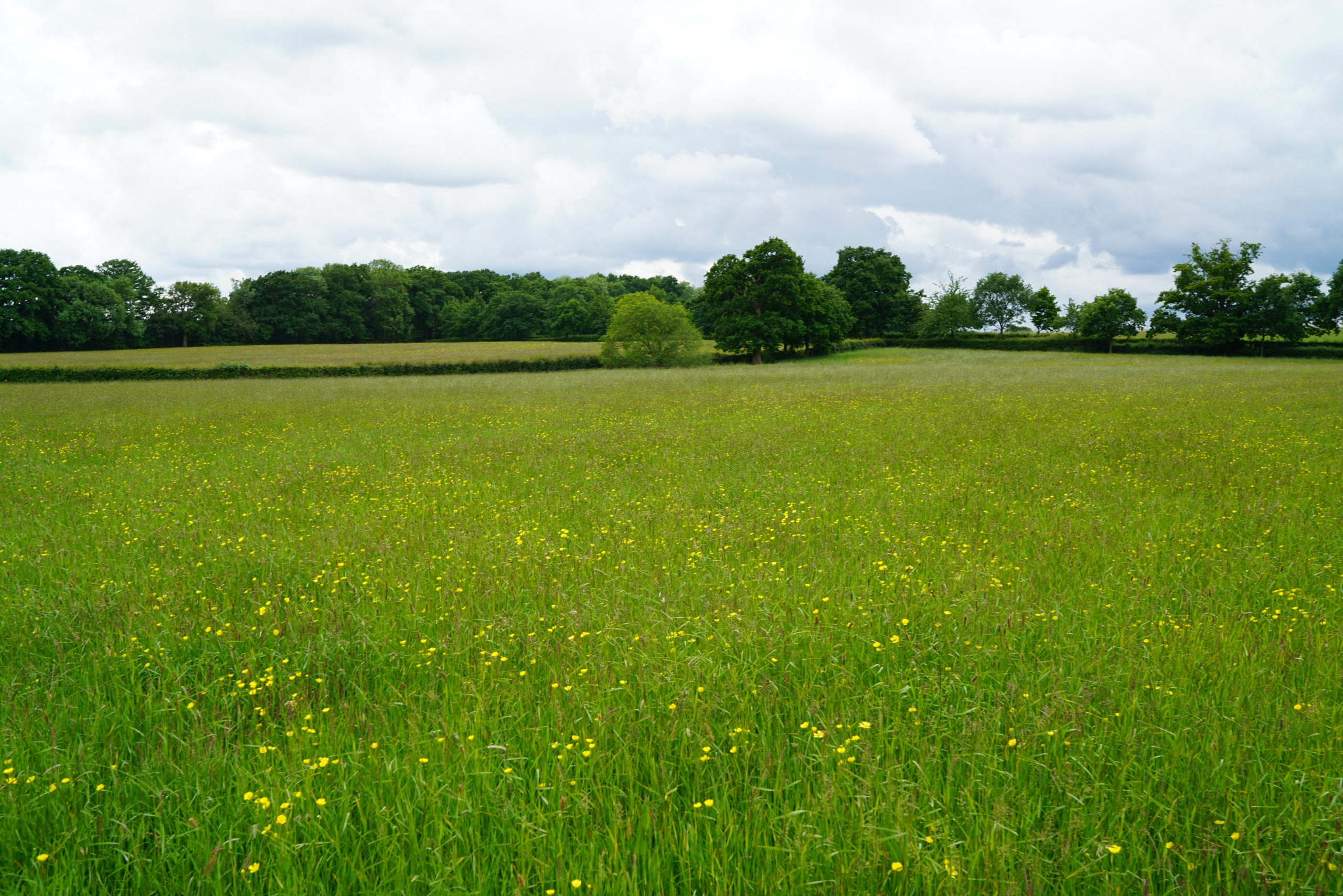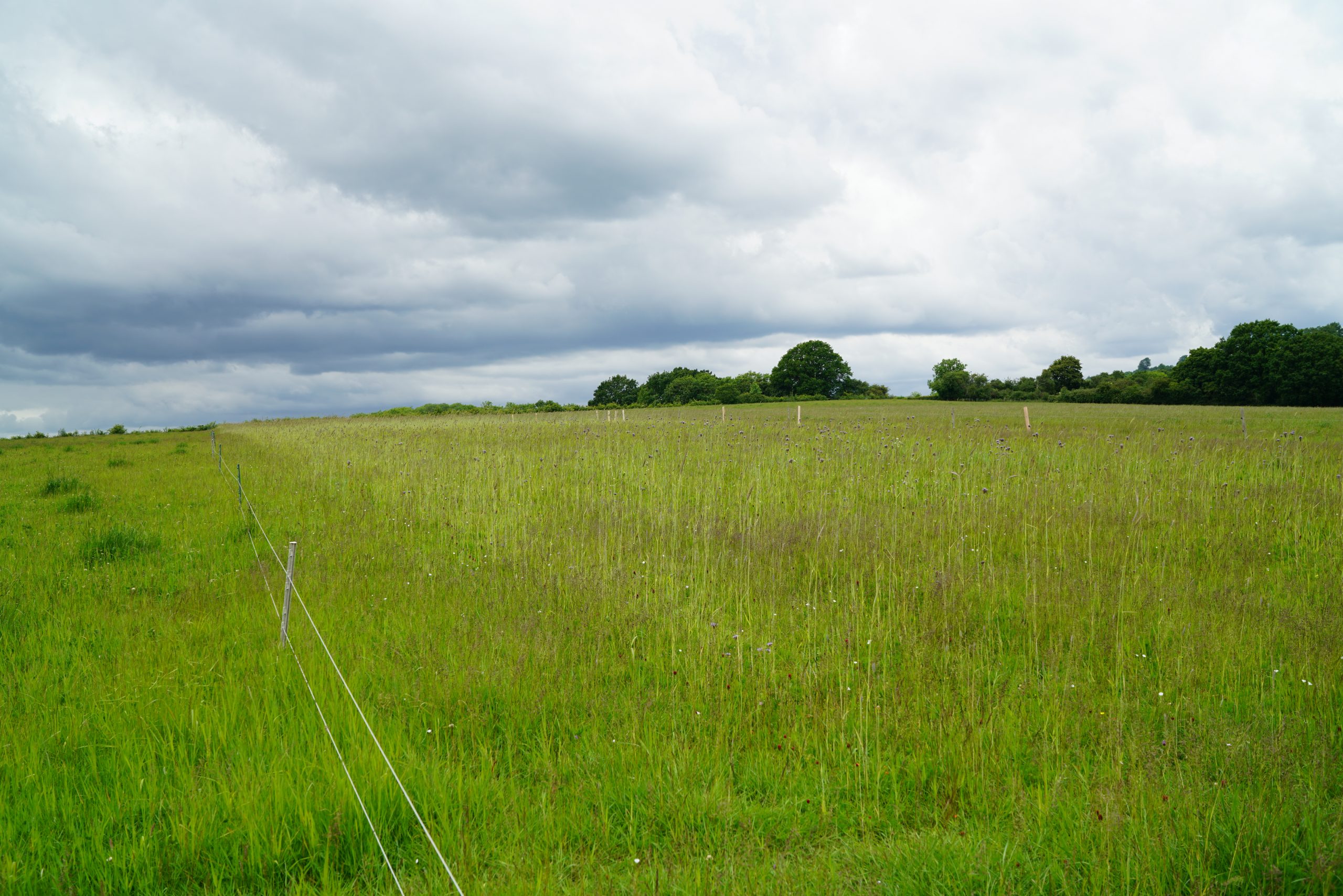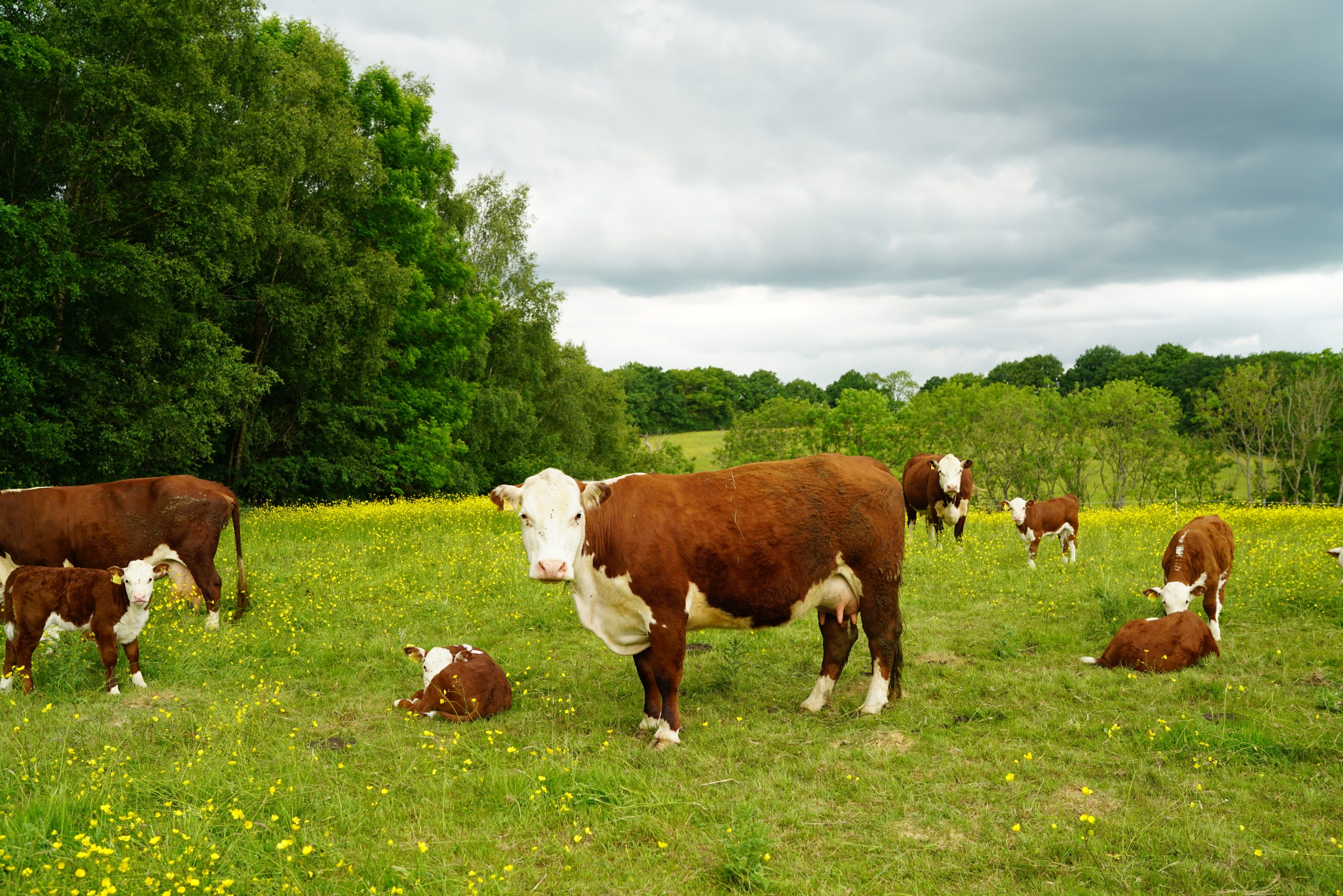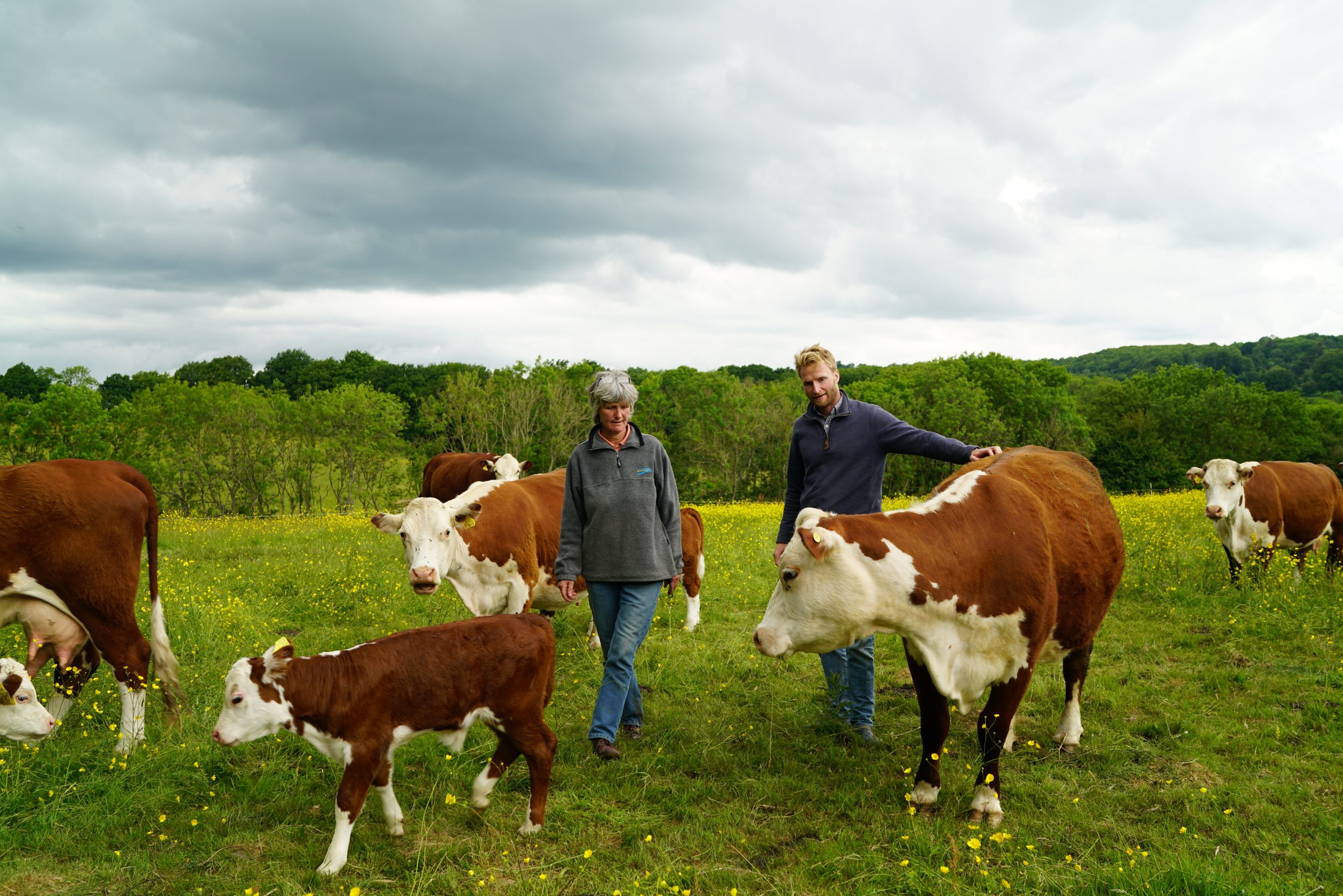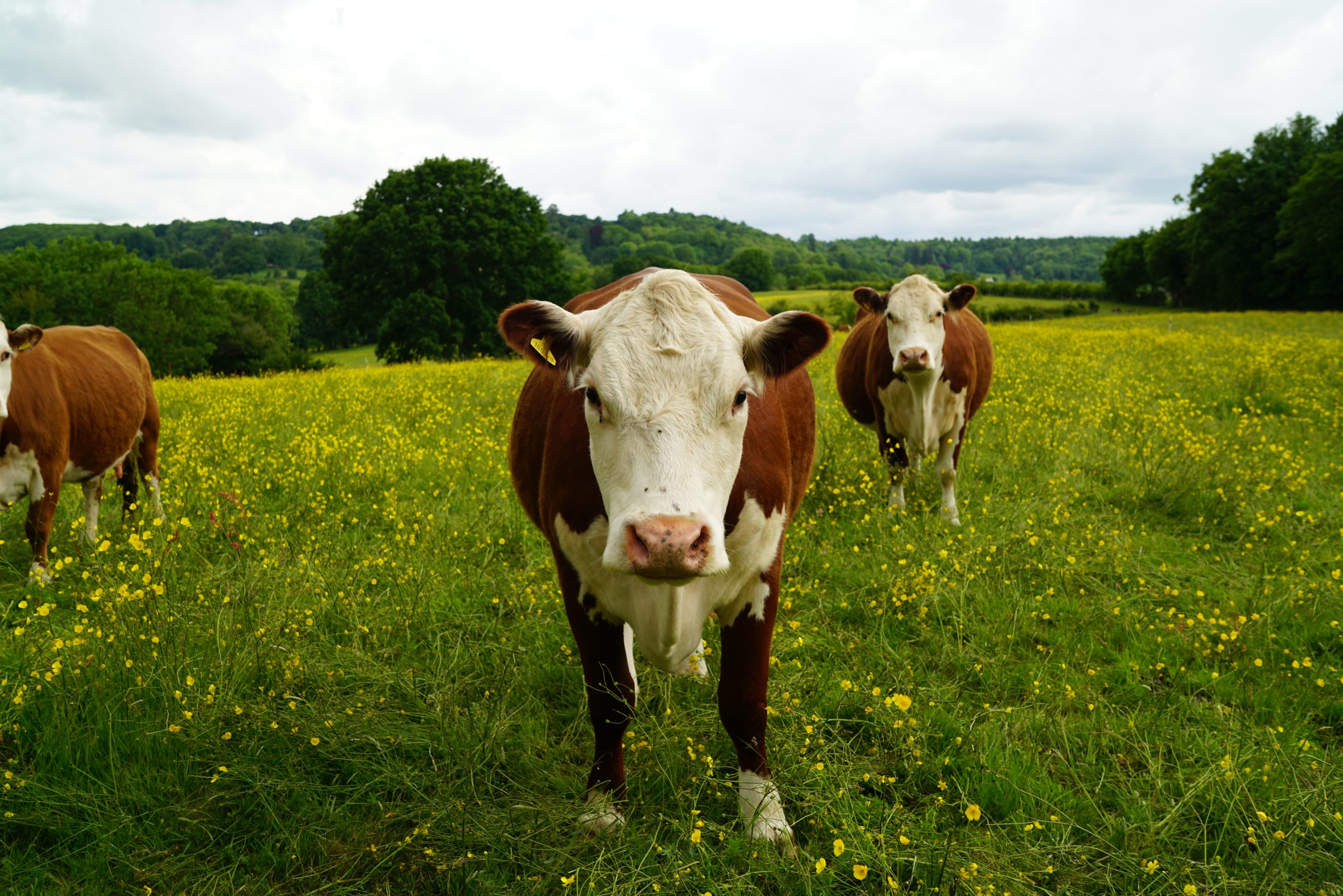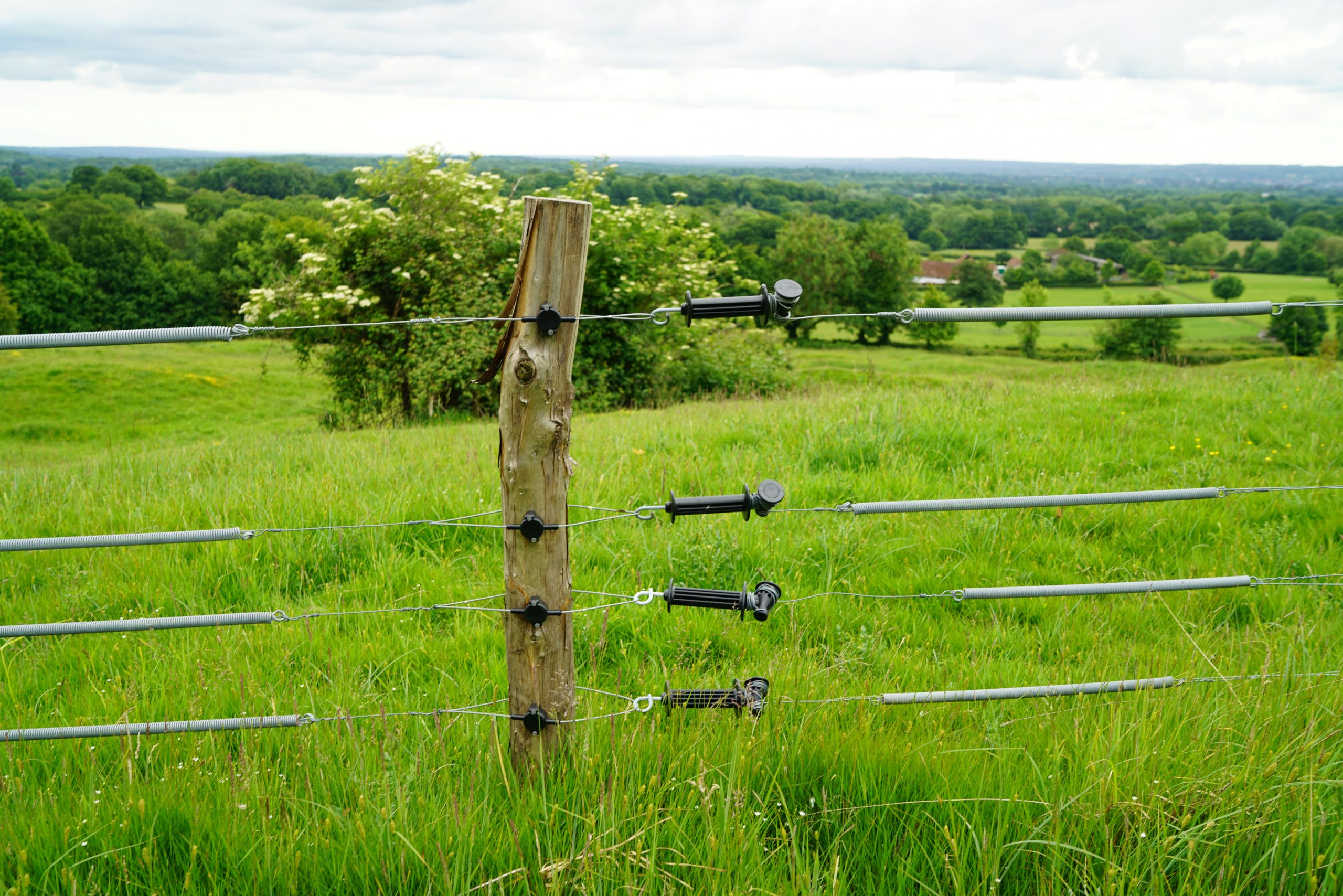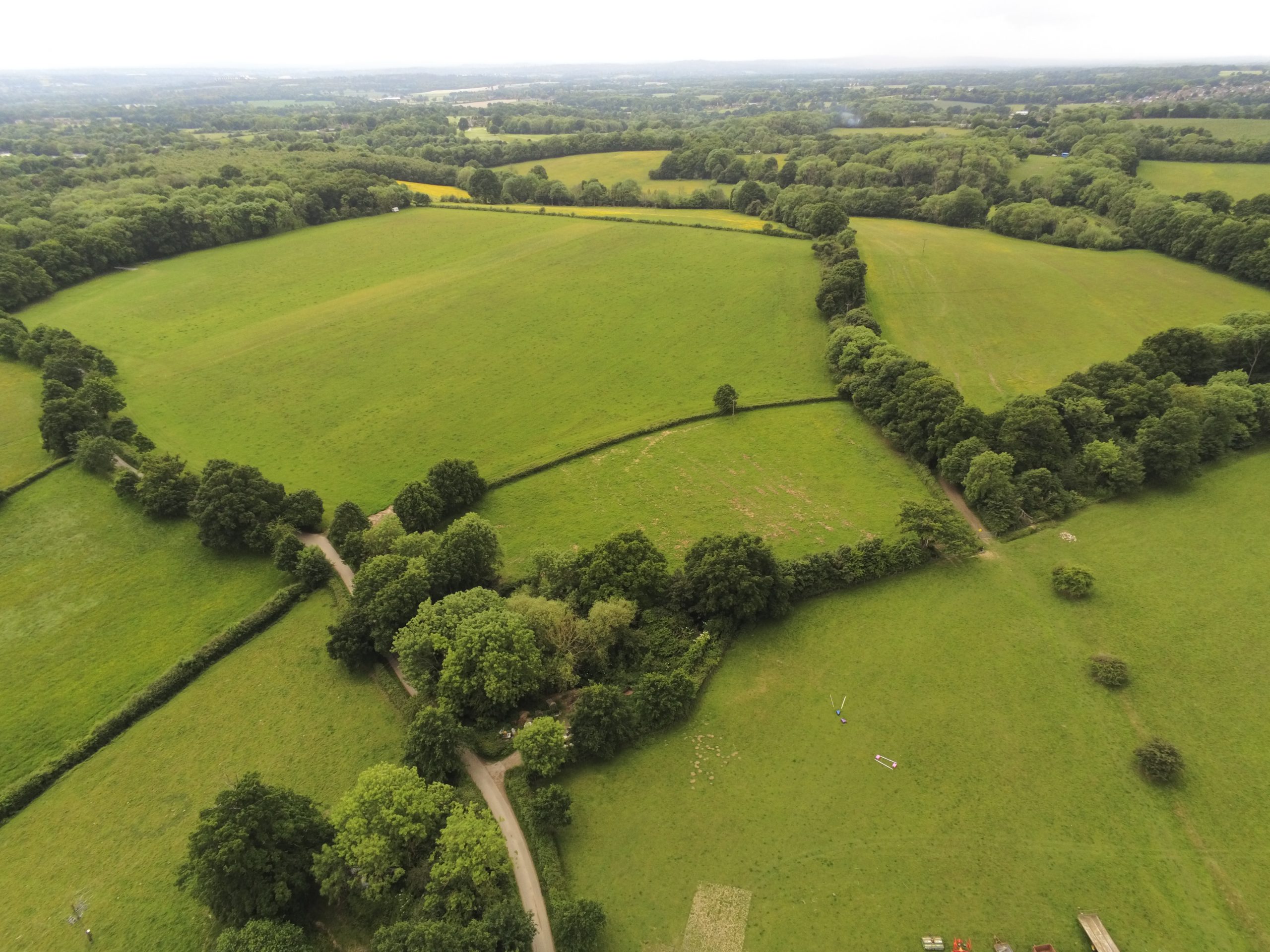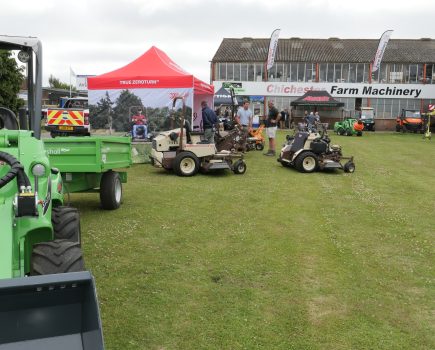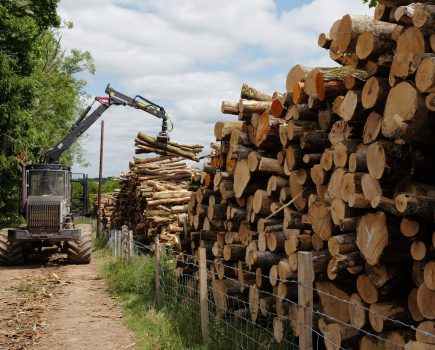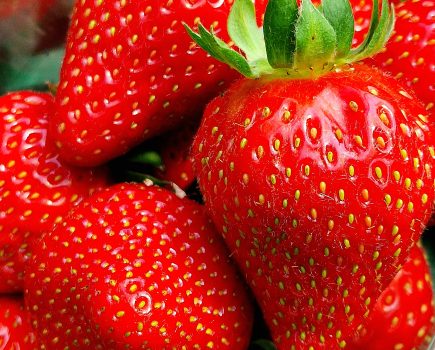This month Nigel Akehurst visits Romshed Farm, in the small village of Underriver near Sevenoaks in Kent, to meet farmer Fidelity Weston and her son Inigo and learn more about their nature-friendly family farm.
Arriving at Romshed farm down a long tree-lined lane in the picturesque Kent countryside, I park up in the traditional farmyard and find my way to the old farmhouse. Fidelity and her son Inigo greet me at the door and invite me in.
We start chatting about a group of their cows that are wearing the world’s first GPS collars. Developed by a Norwegian technology company called Nofence, these collars promise to revolutionise the way livestock farmers graze animals on pasture.
As the company name suggests, the GPS collars negate the need to have physical fences and allow the farmer to create virtual fences via an App on their smartphone that ultimately controls where animals can graze.
Fidelity opens her Nofence App and shows me a list of the cows currently grazing a field just off a small country lane in the nearby village of Plaxtol.
“There are no fences,” she said, confirming that without the collars the cows could go anywhere.
She brings up a map on the App that shows the virtual fence boundary in the field where the cows are grazing and explained:
“You can set the grazing area by drawing on the map. There’s a boundary of about five meters. As they approach, it plays a tune and then “zap”, they get a shock. Over time they learn to turn their head away.”
Another section in the App shows the number of animals that have heard the tune and the number of shocks. This data provides a fascinating insight into the character of the cows and allows her to see which are leaders and followers. Interestingly, some of the cows have never received a shock, she said.
The technology is proving useful, but she can’t see it replacing physical fencing soon.
“I wouldn’t be 100% confident to rely on it next to a main road, especially with the risk of dogs chasing animals,” she explained.
The other limiting factor is cost. At present the collars are £250 apiece and the software to run them is another £50 a year (per collar), making it unviable back on the home farm, she said.
However, for grazing small parcels of outlying land the technology works well and she can cover some of her costs by charging landowners £20 an acre to graze their land. This invariably works out cheaper than getting a local contractor to top the grass, as well as being beneficial for biodiversity, she explained.
“I’m on a mission to get all these little areas grazed and not topped. It makes such a difference to wildlife,” she said.
“A recent customer described how the field feels more alive. The cattle had only been in there a couple of weeks, eaten it down and it starts growing again. It’s so natural. You get your tufty bits for voles and then you get your barn owls. You wouldn’t get that with a topper,” she continued.
Romshed Farm
Our conversation turns to the home farm. Fidelity and her husband Martin bought the farm in 1984.
When they arrived there was barely a fence left standing and all the gates had been removed and sold by the tenant.
“There had been no investment in the farm as the tenant didn’t get on with his landlord,” she explained.
“The hedges were so overgrown you couldn’t drive down the farm lane without scratching your car, which set the tone for a wilder farming,” she said.
They started out with 400 breeding ewes, lambing inside – “all very conventional,” she added.
“As I had more children it became a bigger headache,” she continued. They cut back on numbers and entered into an ‘amazing’ arrangement with another farm to be their set-aside.
“We stopped managing a couple of fields and the change was incredible,” she said.
When that came to an end, the Government was giving incentives to go organic. With lots of weeds and lapwings nesting in the fields they couldn’t bear the idea of spraying, so decided to bite the bullet and convert to organic.
Thankfully it wasn’t a big change, having previously only used nitrogen fertiliser on their hay ground and a bit of spray for the docks (which at one time they believed were bad things to have).
“We stopped putting nitrogen on the fields and suddenly we had all these different species coming through. It was a big learning exercise,” said Fidelity.
Ever since then they have tried to maximise opportunities for wildlife and increased biodiversity – “producing food in harmony with nature,” she said.
Farm tour
We head out for a walk, crossing one of their fields with a diverse mix of long grasses. Fidelity points out a few of the different species and explained how they have been restoring their lost wildflower-rich meadows.
“Across the UK we’ve lost 97% of our wildflower meadows. Our own meadows aren’t great, as we’re on heavy clay, but they are still valuable,” she said.
“The sound of the insects you get in the summer that you don’t get in our neighbours’ fields as they are all heavily nitrogen-ed,” she continued.
The wildflower meadows are just one part of a diverse habitat of long grass, old mixed hedges and small copses which provide wildlife corridors for insects, small mammals and birds.
Rotational and mob grazing
Soil health is another key focus on the farm and Fidelity and Inigo are experimenting with different ways of grazing their livestock to encourage deeper rooting plants, enabling the soil to hold more carbon and improve its water-holding capacity.
They regularly move the sheep and cattle from field to field, which helps to spread the wildflowers and native grasses, resulting in a cacophony of insect noise in the hay meadows during the summer months.
Permanent electric fences were installed across the farm in 2019 to facilitate rotational grazing. It’s a system that allows Fidelity and her part-time stockman Darren Major to easily divide up their fields into smaller paddocks. They use Kiwitech electric fencing posts and a drag water trough.
Typically, they move their cows every three to four days but are now planning to get some batt latches (automatic electric release gates) to trial moving the cows every day or multiple times a day.
In theory the cows should eat a third, trample a third and leave a third for photosynthesis, said Fidelity, though she recently learned that the grass can be eaten down hard as long as there is a long rest period.
Currently they don’t integrate sheep and cattle. The flock of 160 Lleyn ewes and lambs goes up on the hill to a neighbouring block of 50 acres that they rent; they move them every 10 days or so.
“We’re moving the farm towards a more pastoral, wild sort of farm. I know Inigo would like us to get rid of the sheep (“not fully,” he interjected),” said Fidelity.
“Sheep are more work,” Inigo said. “I would shift more towards the cattle and have fewer sheep. I suppose with the mob grazing it’s an efficiency thing. Why not just have a big herd and just move it every day?
“We’ve got quite small fields, so if you get the herd big enough you might not even need to worry about partitioning them,” he added.
He also points to research that suggests cows are better at accelerating deeper rooted plants, though he admits there is a risk that you get a less complex grazing structure.
When considering efficiency, Fidelity concedes: “The truth is moving two or three strands of wire is a lot more work compared to one and that’s a good reason for not having them.”
Since moving to mob grazing they’ve noticed an improvement in the productivity of their sward and fewer buttercups, which suggests an improvement in their soil as buttercups love compacted, acidic soils.
Native breeds
We arrive at a field with a group of pretty cows and young calves. Fidelity said they had bought their first suckler cows back in 2000. It was a toss-up between the local Sussex breed and Herefords, she explained. They wanted a breed that would fatten on grass and be easy to handle.
After speaking to a number of farmers, they opted for the latter and have built a herd of 22 cows, with plans to increase to 30 in the next couple of years. “They are very easy calving,” she said, adding that she particularly liked their “scooped up noses”. The animals spend most of the year out on pasture and are bale grazed in the winter, with the cows coming into the barn for only the wettest months.
All their animals are 100% pasture fed and finished. Steers are finished at between 26 and 30 months and sold direct, either to butchers or direct in boxes to a local customer base. They aim for finished deadweight of between 320kg and 350kg but have fallen short in the past, she said. As a result, they are phasing out some of their smaller traditional cows in favour of the slightly larger, ‘improved’ Hereford but keeping the ability to be 100% grass-fed by choosing bull replacements very carefully. All heifers are either kept or sold as breeding stock to other farms.
They don’t worm any of the cattle and carry out regular fecal egg counts for sheep and cattle, as well as sending off samples to the lab to test for liver fluke.
They do still have to worm the lambs occasionally, she said, though a lot less since moving to rotational grazing. This year they’ve only wormed once, which was for Coccidiosis. Lambs are mainly sold direct in half lamb boxes and to local butchers.
Their 160-strong flock of ewes is mainly Lleyn: “They are a commercial breed and bred to be very low input. We haven’t had great lambing percentages at around 1.4, but we get very few losses,” she added.
In the future they plan to move over to Romneys, having been impressed with some tegs they purchased from local sheep farmer Marie Prebble. “I like buying from people we know,” she said.
On farm subsidies and the phasing out of BPS
“Roughly 25% of our income is either BPS or environmental grants,” said Fidelity.
“I completely agree with the concept of having to do something for your subsidy. The BPS in my view is not morally tenable. Some farmers would say it’s buffering you for when everything in a year goes wrong. I don’t agree with that.”
She argues that the payments would be better spent on trying to support conventional farmers to change their mindsets about how they address problems and ensuring the right financial incentives are there to do that.
“Encouraging farmers to change is, for very understandable reasons, easier said than done,” she said.
Fidelity said there is still huge uncertainty over the Government’s future farming policy, and as much as she would like to think it might support the change she believes is needed, she doesn’t trust the Government to make the right decisions: “Will they really put their money where their mouth is and help support us through the mindset change? They probably won’t,” she lamented.
Other roles and her thoughts on the future of farming
As well as farming, Fidelity is involved in Pasture for Life. This is a membership organisation of mainly farmers who are keen to improve their use of, and the value of, pasture, with a strong ethos of sharing knowledge and advice on all grazing and ruminant livestock issues. They separately operate, through Organic Farmers and Growers, a farm certification scheme called Pasture for Life and a consumer brand that promotes the unique quality of produce raised exclusively on pasture. A former chair, Fidelity is still one of the driving forces behind the scheme and continues to support Executive Director Jimmy Woodrow.
Pasture for Life has secured funding through the Funding for Protected Landscapes (FIPL) scheme for the South East to establish a farmer mentoring programme. This will include training up farmers to become mentors and recruiting people who would like to become mentees, as well as running a series of farmer-to-farmer open days, workshops, farm walks and other activities, so farmers can learn more about how to manage their grazing to maximise its value to the business.
Getting to grips with electric fencing systems is often key to achieving best results, so there will be a focus on how livestock farmers can move to rotational and mob grazing systems. See
www.pastureforlife.org for details.
As part of Fidelity’s work she meets lots of other farmers. I ask what her thoughts are on the future of farming?
“I’d like to be optimistic. Meeting so many farmers through PFL, we come across many like-minded people and it really seems the way to go. Everybody enjoys their life – they all feel like they are making a living. Accounts suggest that is the case and it’s all very positive and people are up for trying new things and putting nature centre stage.
“You then go to a meeting of more conventional farmers and you can see what a massive job it is to change people’s mindsets. Making change is so hard, I understand that, and when businesses are precarious it adds to the difficulty.
“If you’re struggling to make a living and people are asking you to change, it is taking a risk. We’re lucky we can afford to take risks, as Martin, my husband, has another income,” she said.
“Making that change is enormous. We also see that at PFL – a lot of the younger generation want to do things, but their parents are not very happy about it.
“Wouldn’t it be nice if the Government said: ‘Now is the time to do it. We’re going to support you over the next five years. Let’s get it going now before we all go bust with the price of fuel and fertiliser?’ There really is another way and many farmers are already doing it.”
Wildflower restoration project
Before heading back to the farmyard, Fidelity and Inigo take me to see a former 4.5-hectare arable field which is now in Higher Tier Countryside Stewardship Scheme meadow restoration conversion.
They divided the field into three sections, trying different establishment techniques.
“We got a grant to put in an amazing wildflower meadow mix; we ploughed and put in 1.5 hectares in the far side. We green hayed the middle section using hay from our species rich meadow, getting the cows to eat it off. Lastly we bale grazed the same hay over the winter.”
The results have been fascinating; both the green hayed and bale grazed sections are full of wild flowers. Fidelity is thrilled, pointing out the bright carpet of pink grass vetchlings, one of her favourite flowers.
Interestingly the ploughed section is covered in mayweed. Fidelity doesn’t seem too worried and thinks it will come right, suggesting I come back in a few years to see for myself.
- Fidelity Weston and her son Inigo
- Anafi 1.8.2
Farm facts
- 200 acres owned and another 70 acres of grazing land locally
- Soil Association organic
- Pasture for Life
- 22 Hereford cows and followers. Finish all cattle on farm at between 26 months and 30 months and aim for a deadweight of between 320kg and 350kg
- 160 Lleyn and Romney Ewes. 1.4 lambing percentage
- Part-time stockman
- Trialing Nofence collars on small mob of cattle to graze local parcels of land
- Programme of tree planting and meadow restoration on the farm
- Installed mains electric fencing on the farm in 2019 and have been moving their cattle at least once every three to four days
- Higher Level Countryside Stewardship
- Direct sales of lamb and beef boxes from the farm via a mailing list
- Also sell beef to PFL butchers at a premium (£5.50 p/kilo deadweight)
- The set of traditional farmyard buildings and house is currently being used to film the ITV series The Larkins, a remake of the H E Bates novel The Darling Buds
of May

